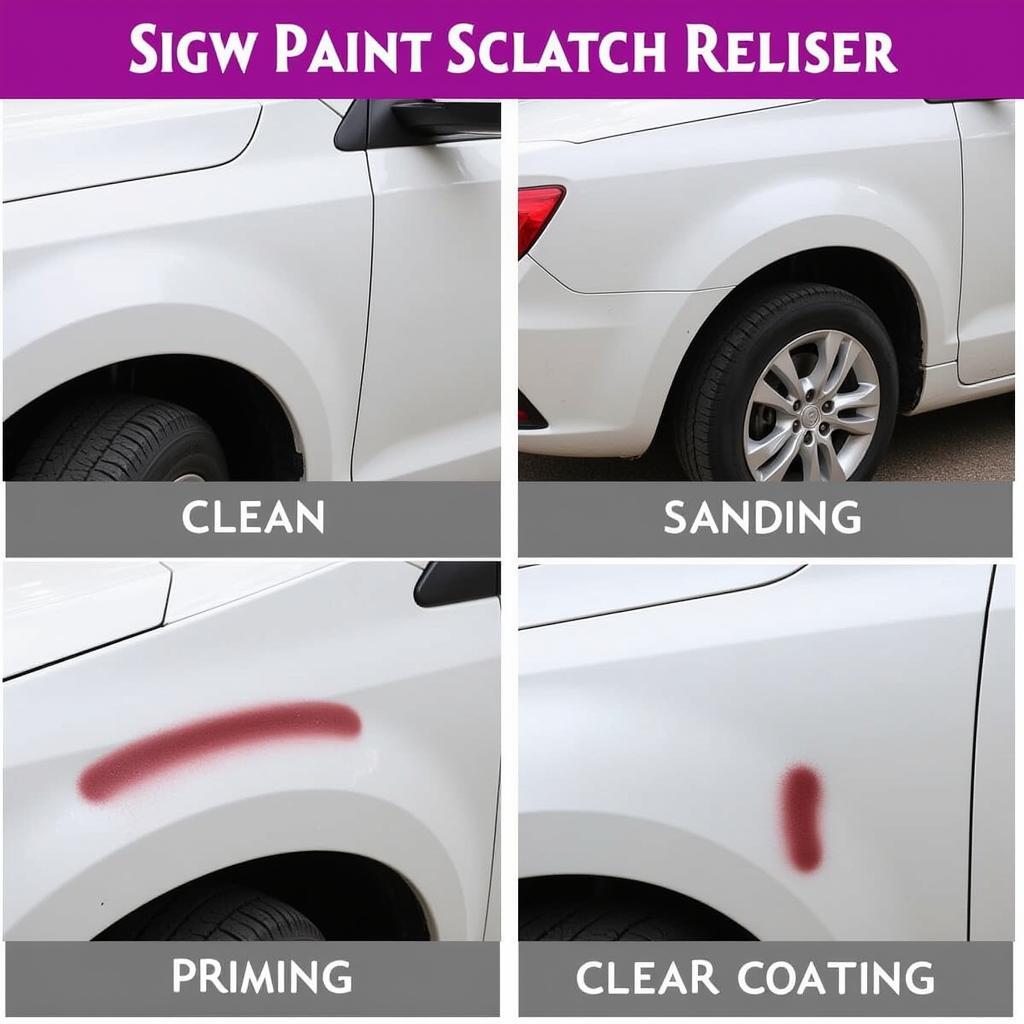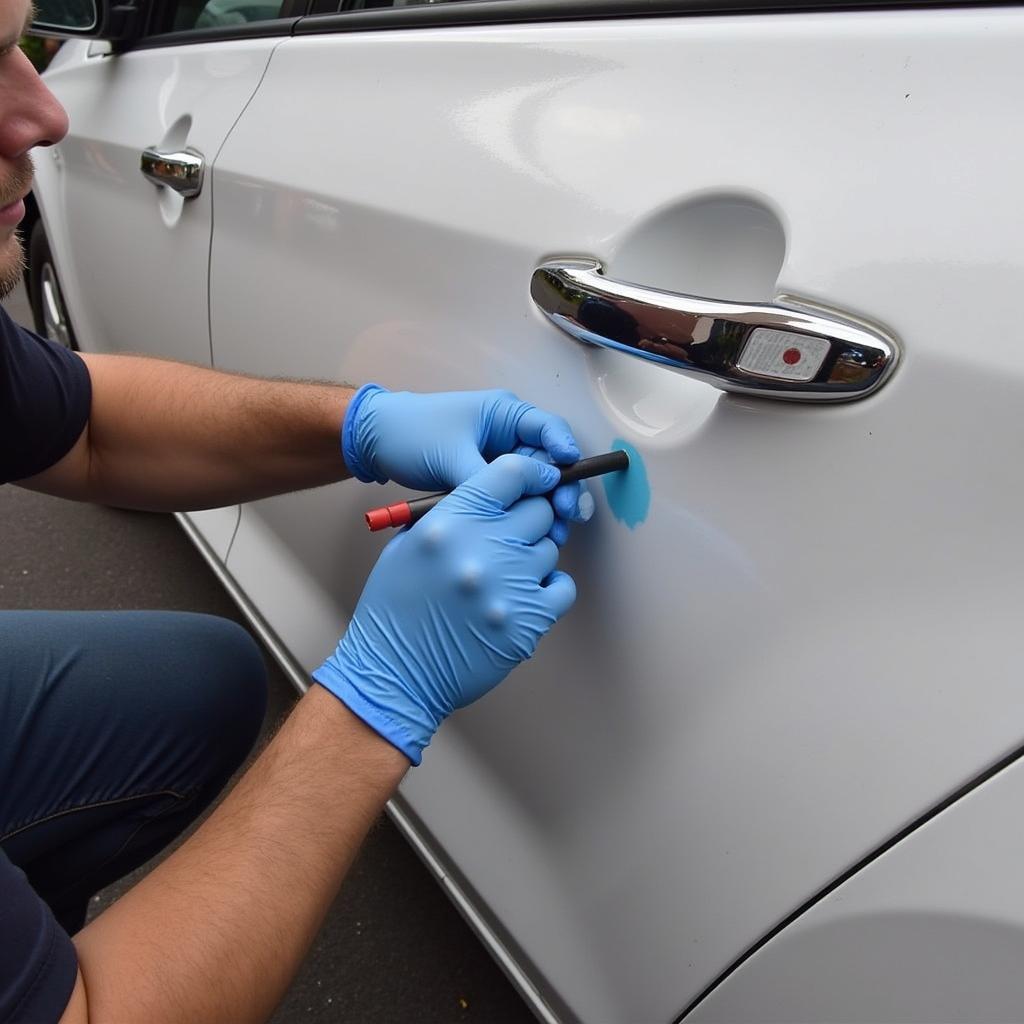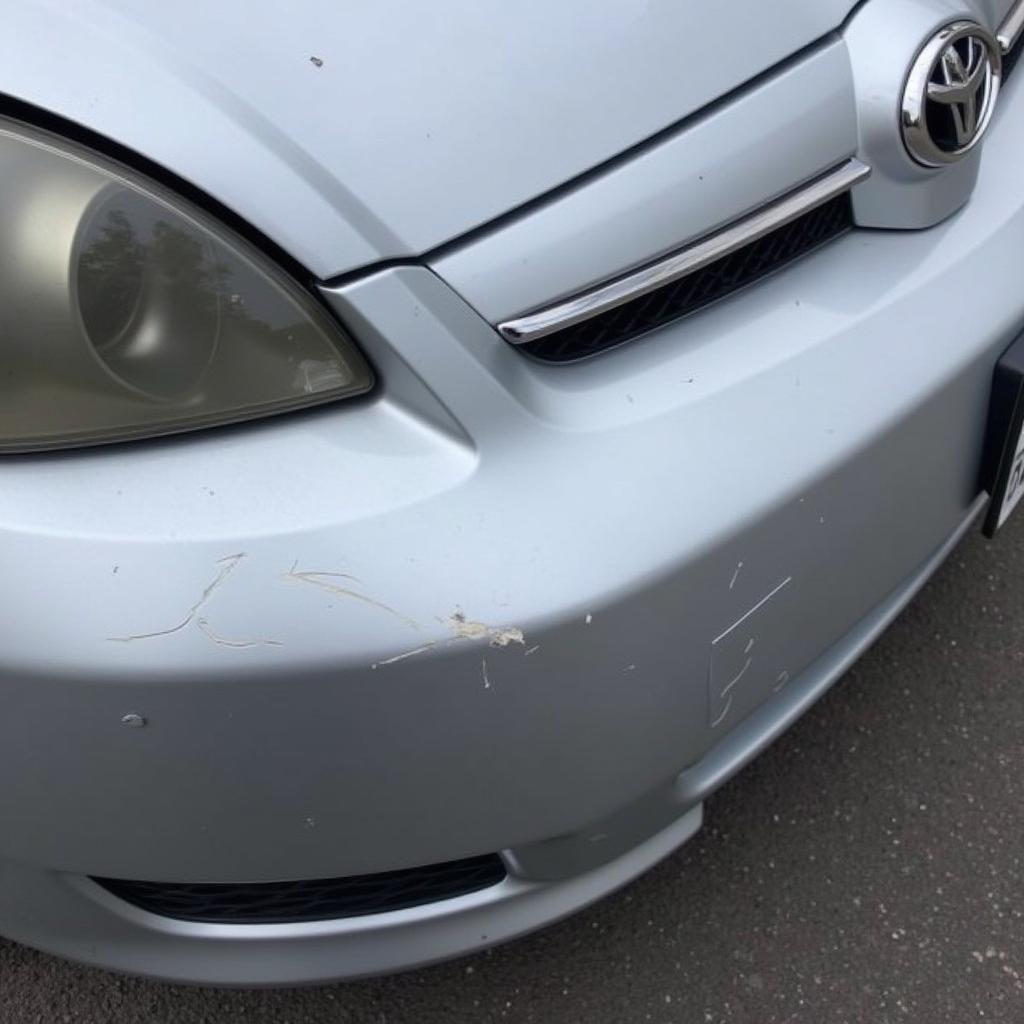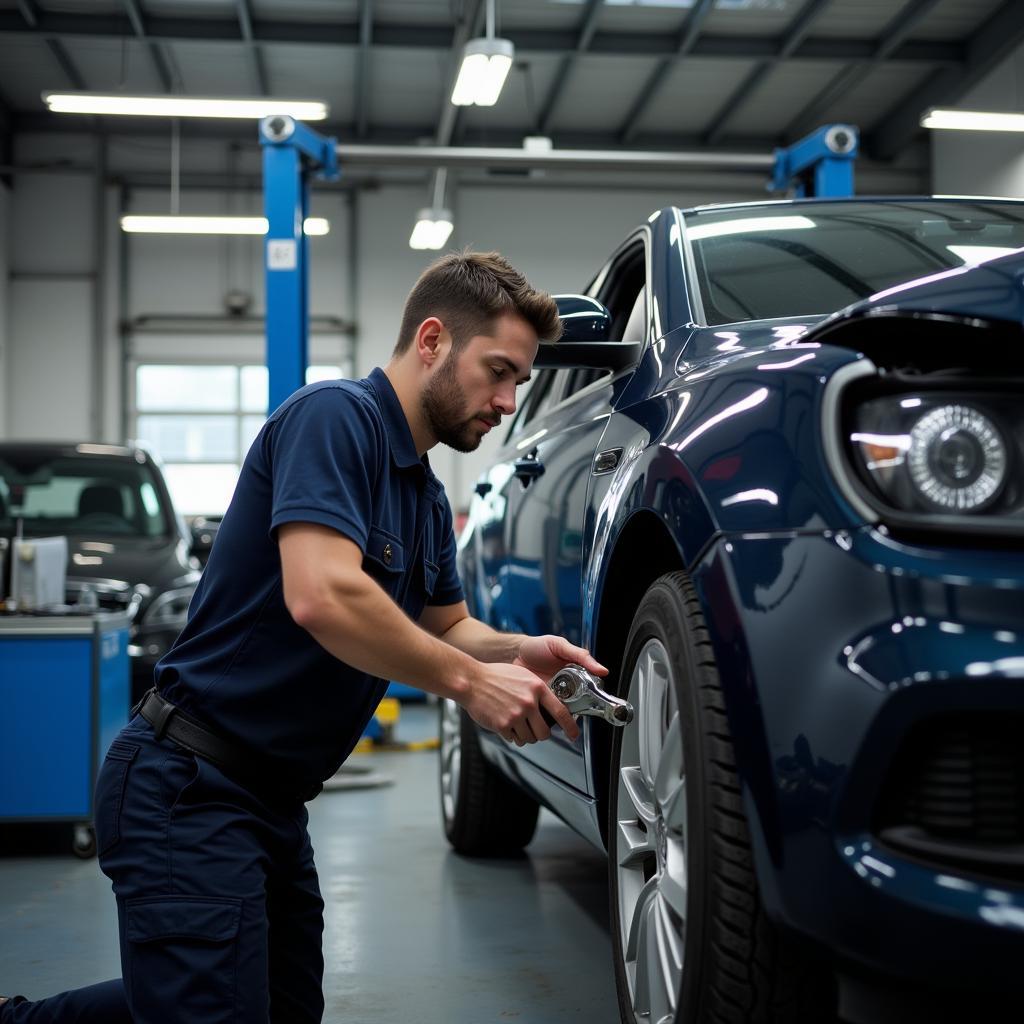Discovering a chipped area on your car’s paint can be frustrating. Whether it’s from a rogue shopping cart, a stray rock on the highway, or an unfortunate parking lot mishap, chipped paint exposes your car to the elements and can lead to rust and corrosion if left untreated. Fortunately, Chipped Car Paint Repair doesn’t have to be a major headache. This guide will walk you through everything you need to know, from understanding the repair process to choosing the right solutions for your needs.
[image-1|chipped-car-paint-close-up|Close-up of chipped car paint|A close-up image showing the damaged area of a car’s paintwork, highlighting the chipped paint and any exposed metal underneath.]
Assessing the Damage: When to DIY and When to Call a Pro
Before you embark on your chipped car paint repair journey, it’s crucial to assess the severity of the damage. Minor chips, often appearing as small scratches or nicks in the paint, can often be addressed with DIY methods. However, larger chips that expose the bare metal underneath or cracks that spiderweb outwards require the expertise of a professional.
[image-2|diy-car-paint-repair-kit|DIY car paint repair kit for minor chips|An image showcasing a typical DIY car paint repair kit, featuring touch-up paint, brushes, and other tools needed for minor repairs.]
DIY Chipped Car Paint Repair: A Step-by-Step Guide
For minor chips, DIY repair can be a cost-effective solution. Here’s how to tackle it:
- Clean the Area: Thoroughly wash and dry the chipped area using soap and water. Use rubbing alcohol to remove any remaining grease or wax.
- Sand (If Necessary): If there’s any rust, gently sand the area with fine-grit sandpaper. Be careful not to damage the surrounding paint.
- Apply Touch-Up Paint: Carefully apply thin layers of touch-up paint that matches your car’s color. Allow each layer to dry completely before applying the next.
- Level the Surface: Once the paint dries, use a rubbing compound to level the repaired area with the surrounding paint.
- Apply Clear Coat: For added protection, apply a clear coat layer over the repaired area.
[image-3|professional-car-paint-repair|Professional car paint repair process|A series of images showcasing the different stages of professional car paint repair, from sanding and priming to painting and finishing.]
Professional Chipped Car Paint Repair: What to Expect
For extensive damage or if you’re not comfortable with DIY repairs, seeking professional help is recommended. Here’s what a professional repair might involve:
- Surface Preparation: The damaged area is thoroughly cleaned, sanded, and prepped for paint adhesion.
- Priming: A primer is applied to create a smooth surface for the paint to bond to.
- Painting: Multiple layers of automotive paint are applied, ensuring a perfect color match.
- Clear Coat Application: A protective clear coat layer is applied for a glossy finish and UV protection.
- Polishing and Buffing: The repaired area is polished and buffed to blend seamlessly with the surrounding paint.
Factors Affecting Chipped Car Paint Repair Costs
The cost of chipped car paint repair can vary depending on several factors:
- Severity of Damage: Minor chips are cheaper to repair than larger areas of damage.
- Repair Method: DIY repairs are the most affordable option, while professional repairs cost more.
- Location: Labor costs can influence the overall price.
- Paint Type: Certain paint types, like metallic or pearlescent, can be more expensive to match and apply.
For more detailed information on repair costs, check out our guide on small car paint repair cost.
Preventing Chipped Car Paint: Proactive Measures
While some chips are unavoidable, there are steps you can take to minimize the risk:
- Regular Washing and Waxing: A clean and waxed surface is more resistant to chips and scratches.
- Careful Parking: Choose parking spots away from high-traffic areas and potential hazards.
- Paint Protection Film: Consider applying a clear paint protection film to vulnerable areas, like the hood and bumpers.
Frequently Asked Questions About Chipped Car Paint Repair
Can I use nail polish to fix a chipped car?
While tempting, nail polish isn’t formulated for automotive paint and can cause more harm than good. It won’t adhere properly, may react with your car’s paint, and won’t offer the same level of protection.
How long does it take for touch-up paint to dry?
Drying time varies depending on the type of touch-up paint and environmental conditions, but it typically takes at least 24 hours for the paint to fully cure.
Can I wash my car after applying touch-up paint?
It’s best to wait at least 48 hours after applying touch-up paint before washing your car to allow the paint to fully cure.
Can I apply touch-up paint myself if I have a metallic paint job?
While it’s possible to touch up metallic paint yourself, it can be challenging to achieve a seamless finish due to the complex nature of metallic flakes. If you’re not comfortable with the process, it’s best to consult a professional.
How often should I wax my car to prevent chips?
It’s generally recommended to wax your car every three to four months to maintain a protective layer and prevent chips.
Looking for a Scratch-Free Shine?
Chipped car paint repair is an essential part of maintaining your vehicle’s appearance and value. Whether you choose a DIY approach or seek professional help, addressing chips promptly can prevent further damage and keep your car looking its best. If you need to address other paint imperfections, our guide on car polish paint scratch repair provides valuable insights. For more comprehensive repairs, explore our resources on repair paint scratches on car and paint chip car repair.
For residents in the South East Melbourne area, our guide on car paint repair south east melbourne offers localized information and services. Remember, a little care and attention can go a long way in preserving the pristine look of your car.




